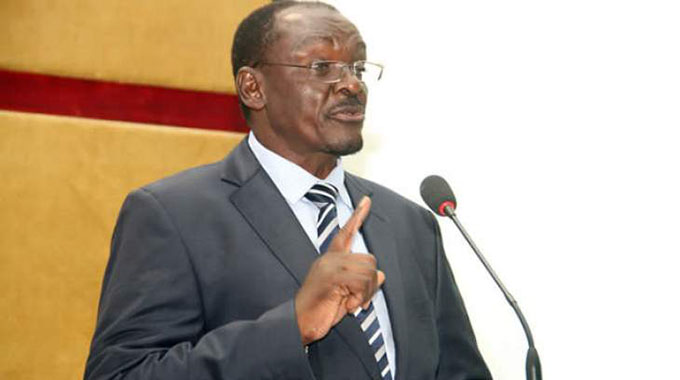Mohadi meets industry leaders

Martin Kadzere in Bulawayo
ACTING President Kembo Mohadi will get full appreciation of issues besetting local industry when he meets industrial leaders during their annual congress underway in Bulawayo seeking to come up with interventions to rejuvenate one of the key sectors expected to drive economic recovery and growth in Zimbabwe.
The Acting President, who is also expected to provide policy intervention to the challenges facing the manufacturing sector, is scheduled to address over 200 delegates attending the Confederation of Zimbabwe Industries (CZI) three-day annual conference, which began yesterday, the first since the new dispensation.
Among the guest speakers is former Botswana President Ian Khama who will present on how his country leveraged diamonds for economic growth.
CZI spokesperson Kuda Mataure said they were expecting the Acting President to officially open the conference tomorrow.
“We were expecting him on Friday, but the Office of the President and Cabinet (OPC) has since advised us that he will be with us tomorrow since the former President of Botswana Ian Khama will be here by tomorrow,” he said.
CZI vice president Henry Ruzvidzo said yesterday that industry needed to align with the Government’s vision.
“We look forward to chatting a way on how best we can move forward. We believe that the manufacturing industry is the driver of Zimbabwe’s Vision 2030 because of its multiplier effect,” Mr Ruzvidzo said.
Wattle Company project director Joseph Musemwa weighed in saying, “Our thinking seems to resonate with the thinking of the new dispensation.
“The conference will set the tone for prosperity of local industry.”
The manufacturing industry has struggled to regain its footing even after Zimbabwe dollarised in 2009, as most of the manufacturing companies have found it difficult to secure access to affordable long term lines of credit.
Finance Minister Mthuli Ncube told delegates at a Zimbabwe Investors Forum in the US on Sunday, on the sidelines of the 73rd United Nations General Assembly he is attending together with President Mnangagwa, that the manufacturing sector was this year projected to grow at a sluggish 3 percent.
As such, some of the issues that will be discussed at the congress include reindustrialisation of the economy driven by private sector policies.
This year, panellists will provide their perspectives on the beef to leather value chains, motor industry value chains as well as steel value chains.
The role of infrastructure development, technology, and the Industrial Development Corporation (IDC) in re industrialisation agenda will also come up for be discussion.
Currency and fiscal reforms as well as possible or appropriate implementation models — all critical ingredients to reboot Zimbabwe’s sluggish economy — are among major issues that will come under discussion.
Further, discussions will also be centred on the need to address interventions through macroeconomic policies and speakers will be drawn from the Government, banking sector, academia and the private sector.
Last year, the manufacturing sector grew by 1,2 percent and is projected to expand by 2,1 percent this year. Output, a key measure of the performance of this value addition industry, grew by an average of 5,5 percent.
The government had projected the economy would expand 4,5 percent this year, but is optimistic that growth could be as much as 6 percent, underpinned by manufacturing, mining and construction and agriculture.
CZI, the country’s largest industrial companies’ representative, body expects output growth for 2018 to expand beyond last year’s 5,5 percent while capacity would go beyond 50 percent from 45 percent last year.
According to CZI, local manufacturers have registered solid performance during the first six months of the year, in terms of exports, revenues and volumes.
But the improved industrial performance is putting more pressure on foreign currency demand for importation of raw materials, electricity and fuel.
While the country recorded a 44 percent trade deficit during the first six months of the year, the makeup of the deficit shows a significant shift from consumptive to productive imports, according to the Reserve Bank of Zimbabwe.
Raw materials and machinery imports were up 34 and 14 percent for the period between February and June respectively.
Consumer goods imports declined 34 percent to $401 million between January and July 6, from $610 million in the same comparative period the prior year as domestic consumption of locally produced goods surged.








Comments